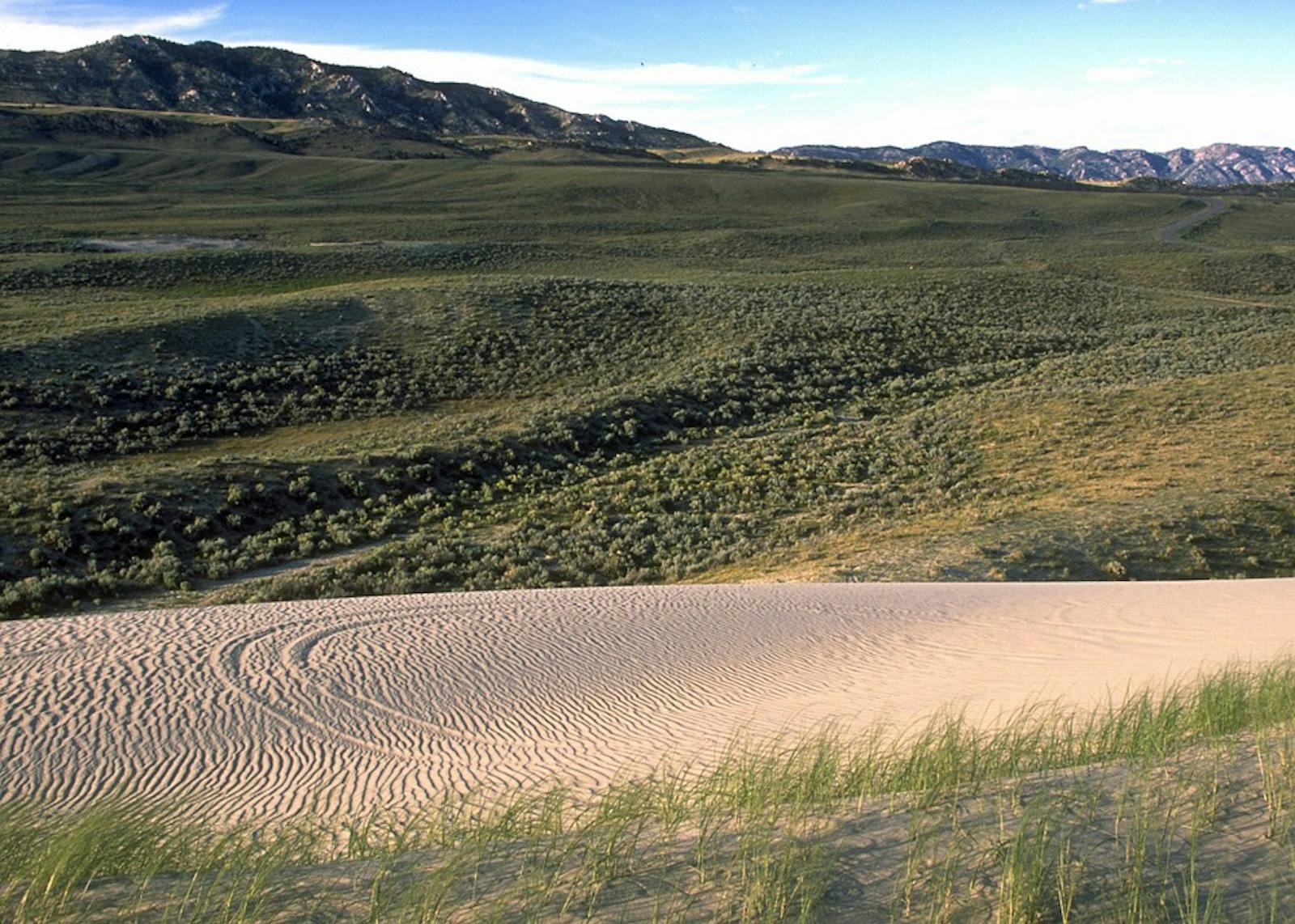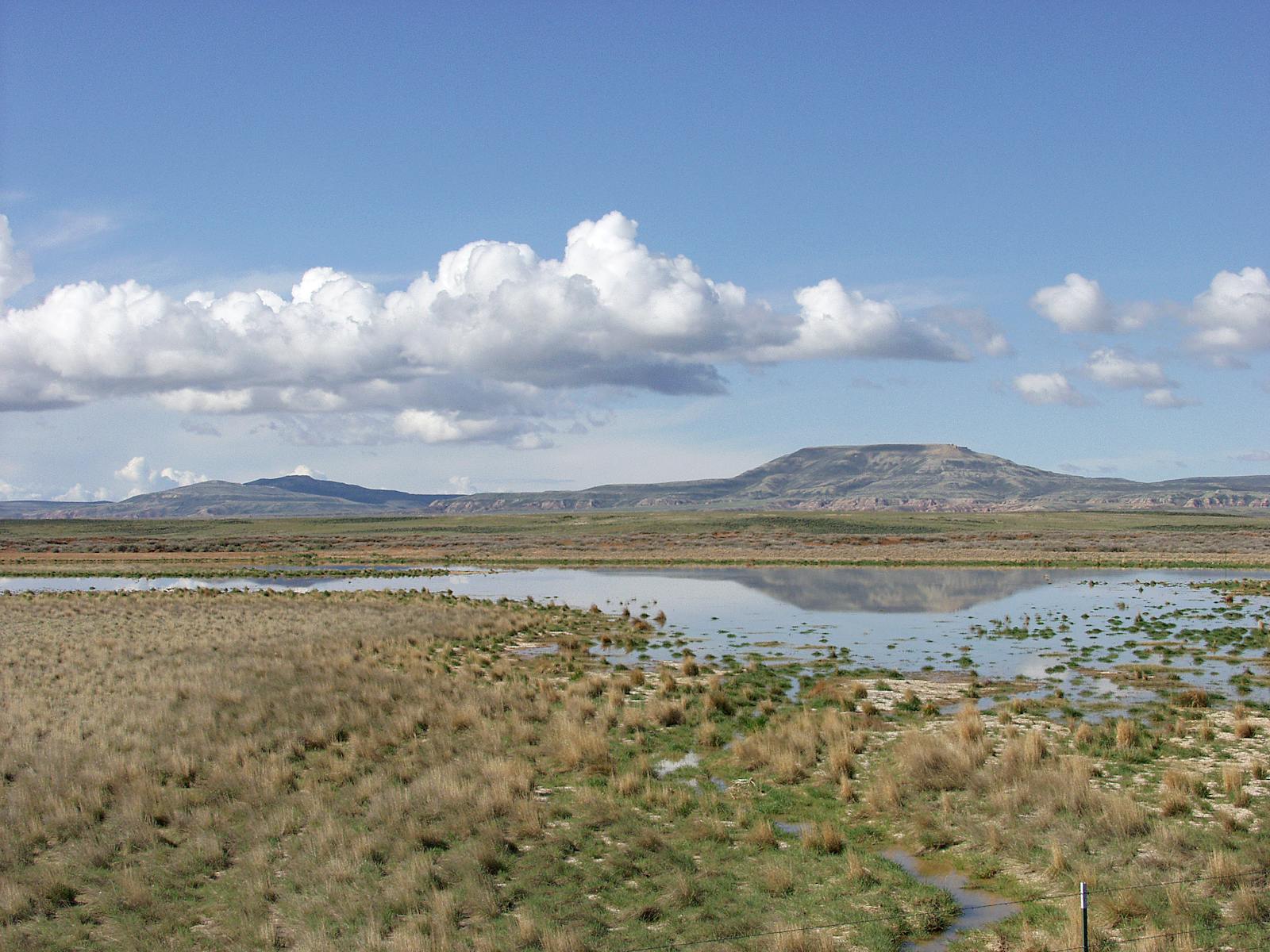Wyoming Basin Shrub Steppe
The ecoregion’s land area is provided in units of 1,000 hectares. The conservation target is the Global Safety Net (GSN1) area for the given ecoregion. The protection level indicates the percentage of the GSN goal that is currently protected on a scale of 0-10. N/A means data is not available at this time.
Bioregion: Colorado Plateau & Mountain Forests (NA19)
Realm: Northern America
Ecoregion Size (1000 ha):
13,276
Ecoregion ID:
438
Conservation Target:
89%
Protection Level:
0
States: United States: WY, MT, ID, UT, CO
The large Wyoming Basin Shrub Steppe ecoregion is largely confined to Wyoming, but overlaps into southern Montana, southeastern Idaho, northeastern Utah, and northwestern Colorado. This ecoregion is separated narrowly from the ecologically similar Snake-Columbia Shrub Steppe to the west by mountain ranges. The Wyoming Basin is generally higher in elevation than the Snake-Columbia Shrub Steppe.
The Uinta Mountains, Colorado Plateau, and Colorado Rockies lie to the south of the Wyoming Basin, while the Colorado Rockies, Northern Shortgrass Prairie, South Central Rockies, and Montana Valley and Foothills Grasslands ecoregions define the eastern and northern boundaries. This high, open ecoregion is drained by three major river systems: the North Platte to the east, the Wind-Bighorn River to the north, and the Green River (a tributary of the Colorado River) to the south. The Great Divide Basin in the south-central portion of the ecoregion is the driest area and has no surficial connection to any river system.
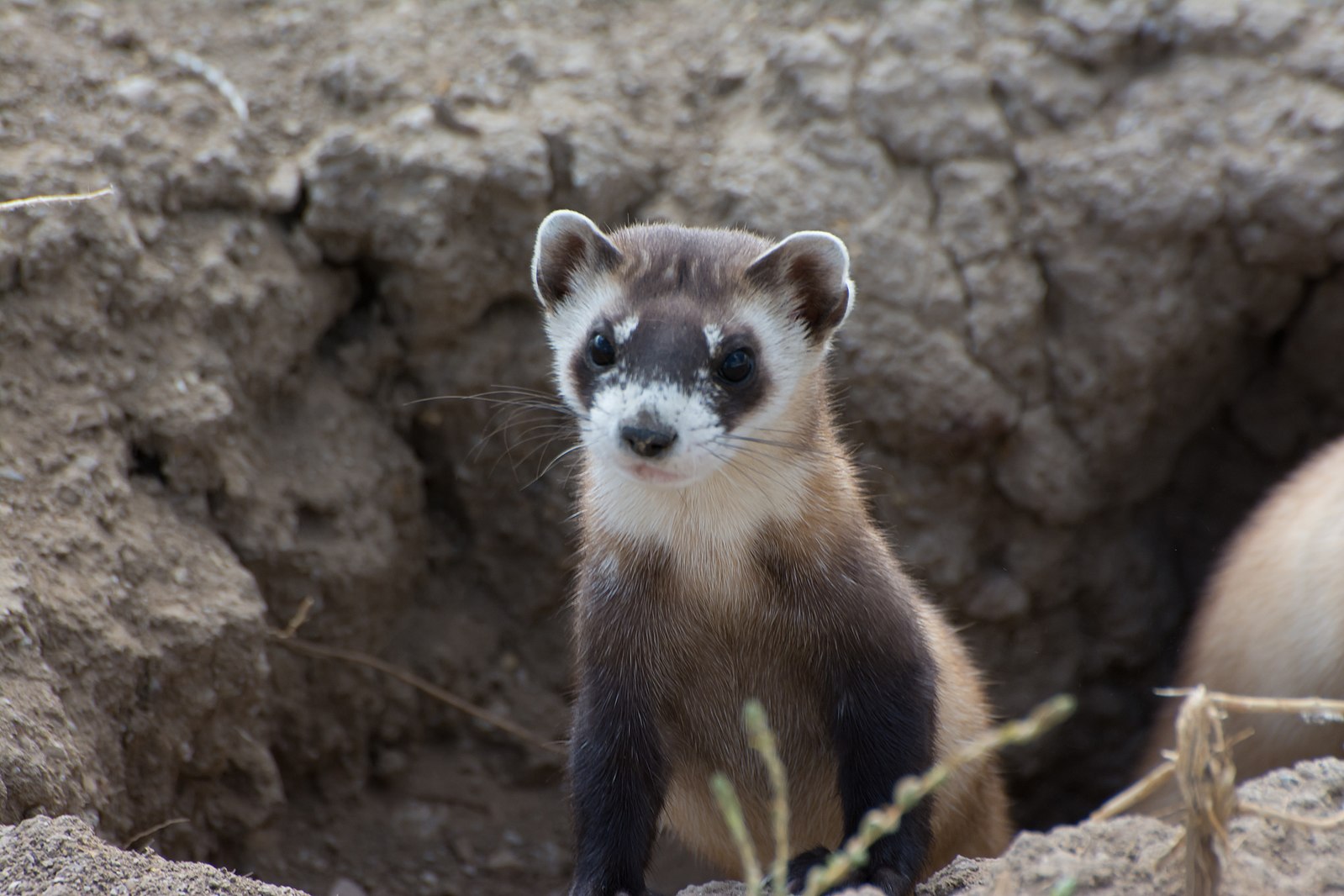
The flagship species of the Wyoming Basin Shrub Steppe ecoregion is the black-footed ferret. Image credit: Creative Commons
The arid to semiarid climate of the Wyoming Basin Shrub Steppe is mostly hot in summer and cold in winter. Due to its location in the rain shadows of mountains, precipitation is low, generally less than 250 mm annually. Unlike the Great Basin or the Snake Columbia Shrub Steppe, the eastern portion of the Wyoming Basin receives some summer precipitation. This rain, however, does not penetrate the Bighorn Basin or the Great Divide Basin, the driest portions of the ecoregion.
The dominant vegetation region-wide is sagebrush steppe, usually with Wyoming big sagebrush and perennial grasses such as bluebunch wheatgrass and Idaho fescue. The vegetation, however, is a complex mosaic. Sites with shallow soil and windswept ridges typically feature black sagebrush and various cushion plants. Sites with alkaline or salty soils are typically dominated by various saltbushes, greasewood, or winterfat, whereas moist areas have basin big sagebrush and silver sagebrush. The natural disturbance regime of fire, wind, and grazing by native herbivores helps maintain vegetation diversity.
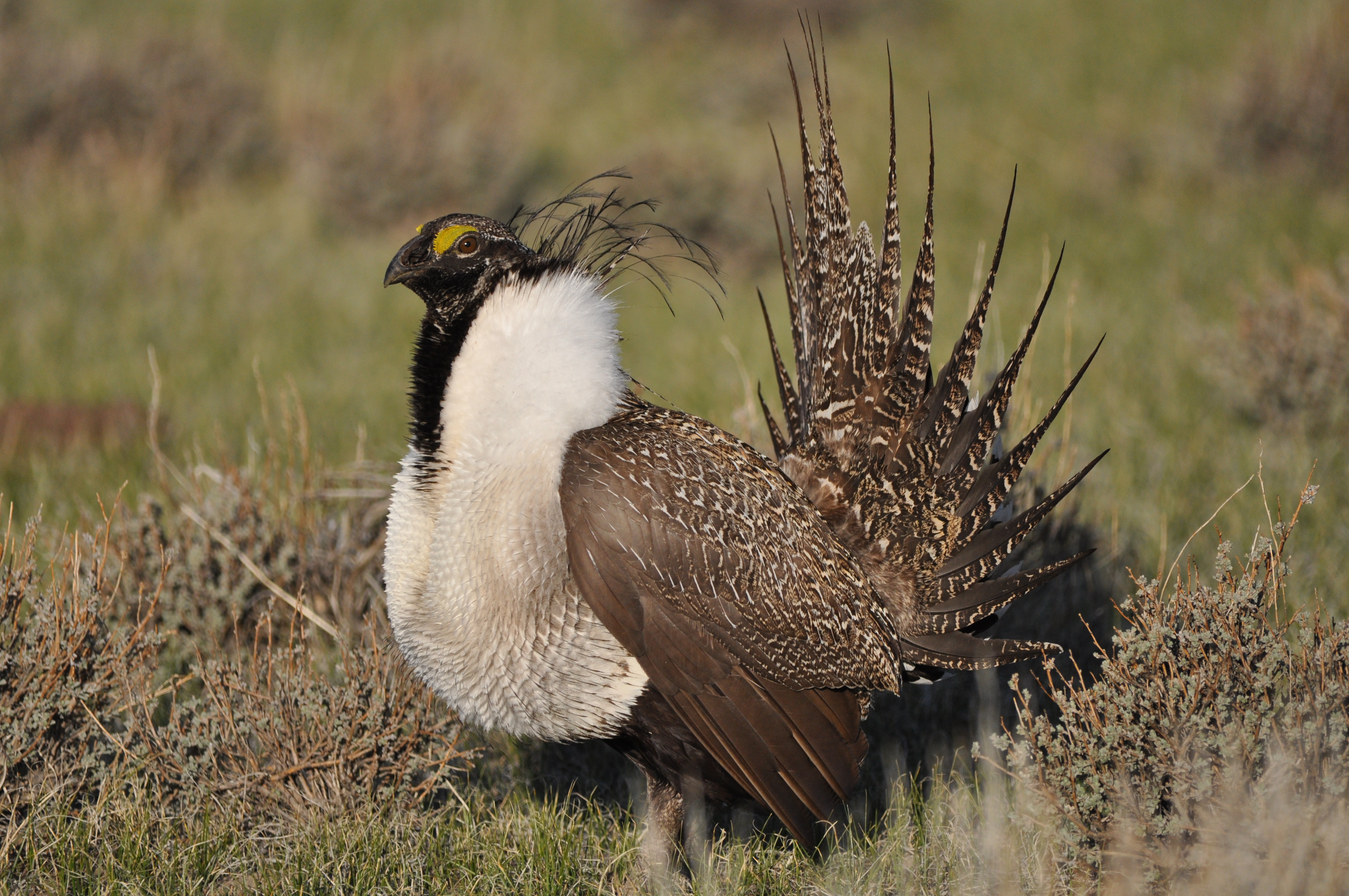
Greater sage grouse. Image credit: Creative Commons
However, overgrazing by domestic ungulates along with other forms of soil disturbance have promoted the spread of exotic plants, including cheatgrass. This annual grass is notorious for dramatically increasing fire frequency, resulting in high mortality of sagebrush and other shrubs. Cheatgrass is considered less of a threat in the Wyoming Basin because it is high and dry compared to the Great Basin and Snake-Columbia Basin, where cheatgrass now dominates many landscapes, but it is increasingly becoming a problem in many areas.
Riparian corridors populated by cottonwoods and dense grass are particularly important ecologically in the Wyoming Basin. Spectacular features of this ecoregion are long ridges of sand dunes, some extending for more than 200 km. Some dunes have been stabilized by vegetation, but many are unstable and are actively moving due to wind.
Remnant colonies of white-tailed prairie dogs occur in this ecoregion. The prairie dog is a keystone species, i.e., many other species depend on the localized soil disturbance and burrows it creates. Prairie dog towns near Meteetse, Wyoming, were where the black-footed ferret, a prairie dog specialist predator, was rediscovered after its presumed extinction. Reintroduction of captive-reared ferrets to remaining prairie dog towns is an endangered species recovery success story.
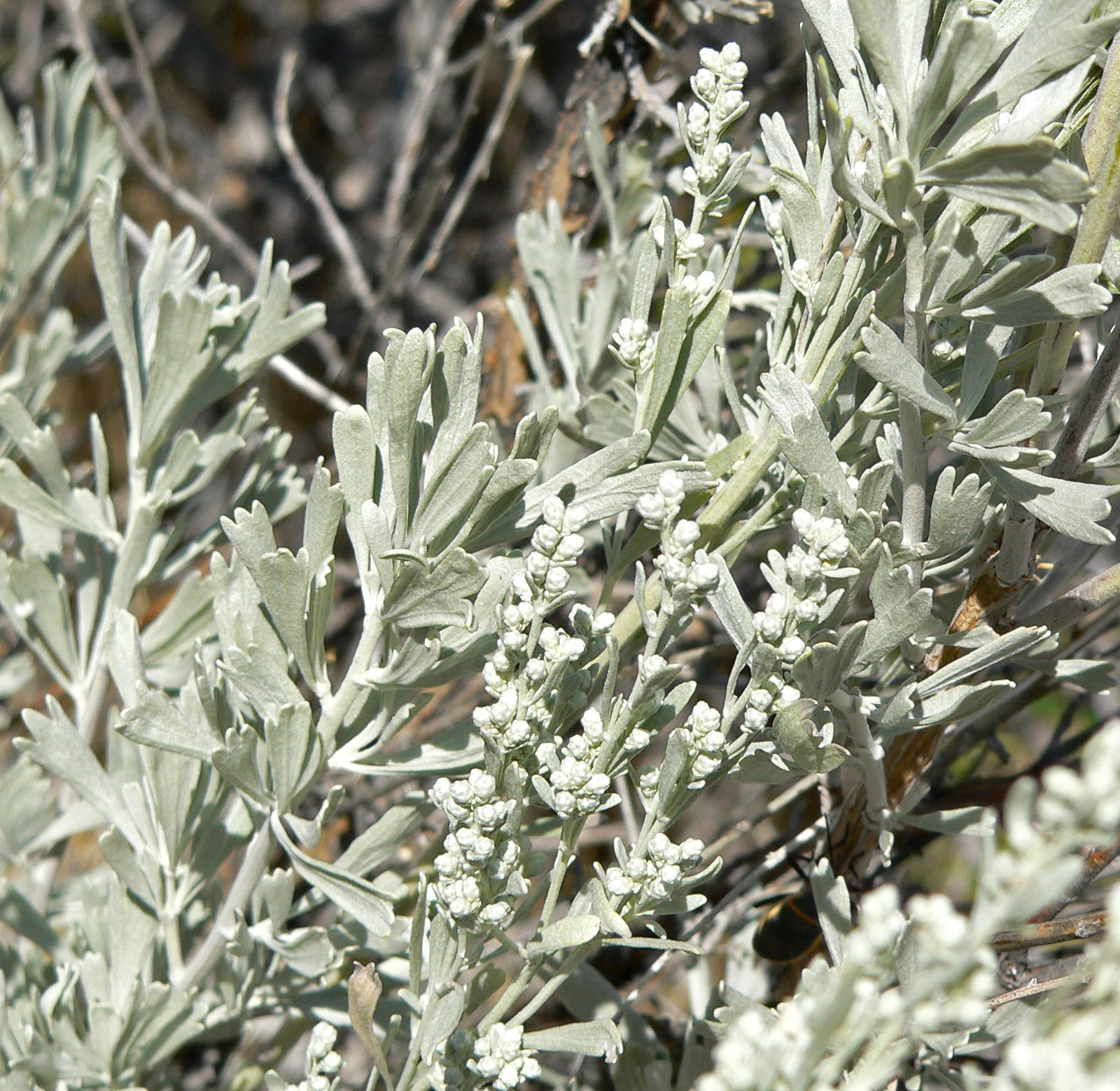
Sagebrush. Image Credit: Stan Shebs, Creative Commons
Other mammals include mule deer, pronghorn, bighorn sheep, swift fox, mountain lion, and many other species. Reptiles include sagebrush lizard, short-horned lizard, gopher snake, and western rattlesnake.
Characteristic breeding birds are golden eagle, prairie falcon, Swainson’s hawk, ferruginous hawk, greater sage-grouse, Wilson’s phalarope, American avocet, burrowing owl, short-eared owl, common poorwill, white-throated swift, Say’s phoebe, loggerhead shrike, horned lark, rock wren, canyon wren, sage thrasher, green-tailed towhee, Brewer’s sparrow, lark sparrow, western meadowlark, and yellow-headed blackbird. Two-thirds of the plant species endemic to Wyoming are found in the Wyoming Basin.
Although most of this ecoregion is remote and wild, it is highly threatened by energy development, especially oil and gas, road-building, and other human activities. Priority conservation actions for the next decade are: 1) establish new protected areas to capture roadless areas and biodiversity hotspots—designate federal Wilderness Study Areas as Wilderness and ensure they are not available for energy development; 2) support wildlife-friendly range management, and 3) find a way to control invasive exotic plants.
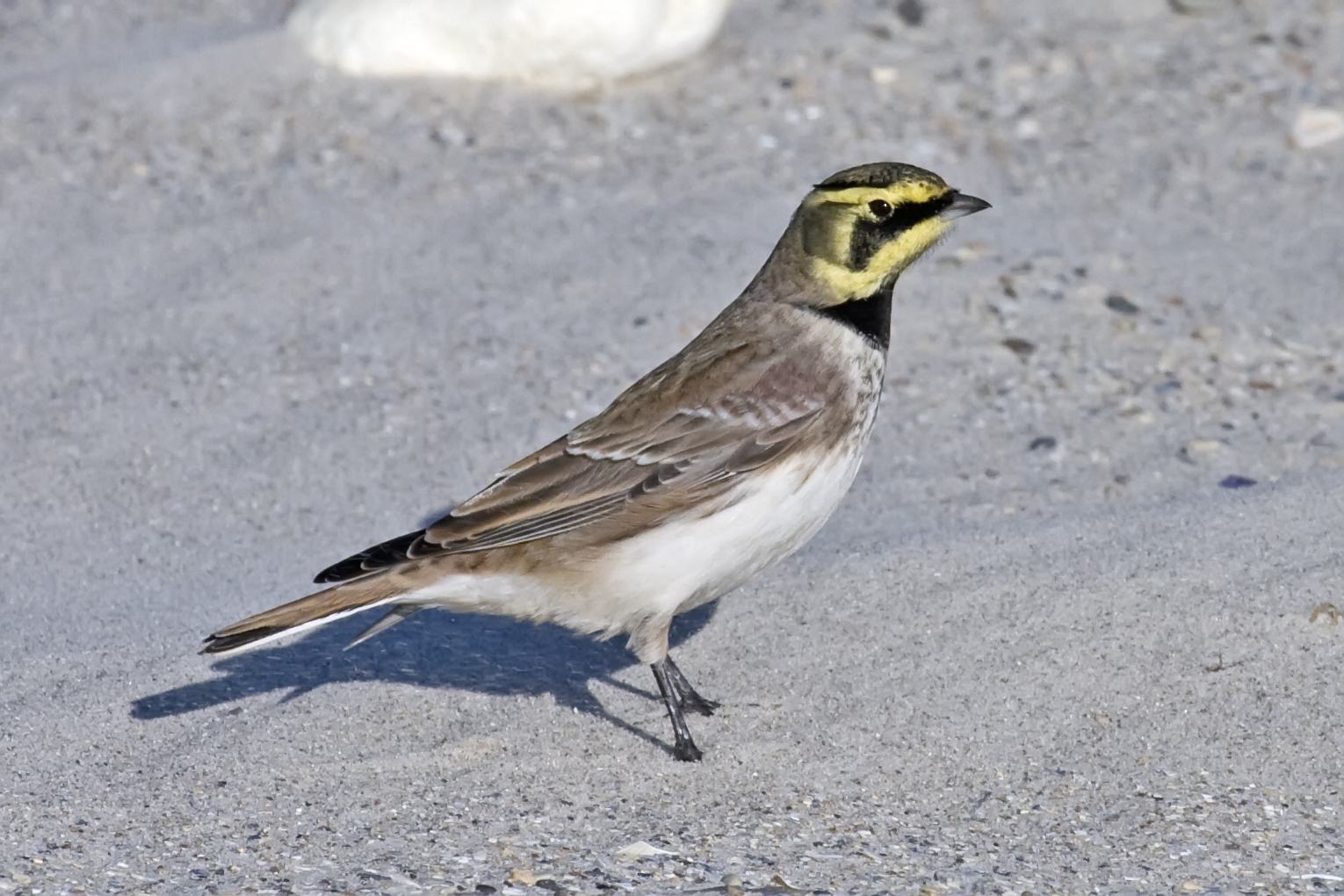
Horned lark. Image credit: Andreas Trepte, Creative Commons
Citations
1. Knight, D.H. 1994. Mountains and Plains: The Ecology of Wyoming Landscapes. Yale University Press, New Haven, CT.
2. Ricketts, T.H. et al. 1999. Terrestrial Ecoregions of North America: A Conservation Assessment. Island Press, Washington, D.C.
3. Wyoming Basin Ecoregion. Landscope America. NatureServe. http://www.landscope.org/explore/natural_geographies/ecoregions/Wyoming%20Basins/
